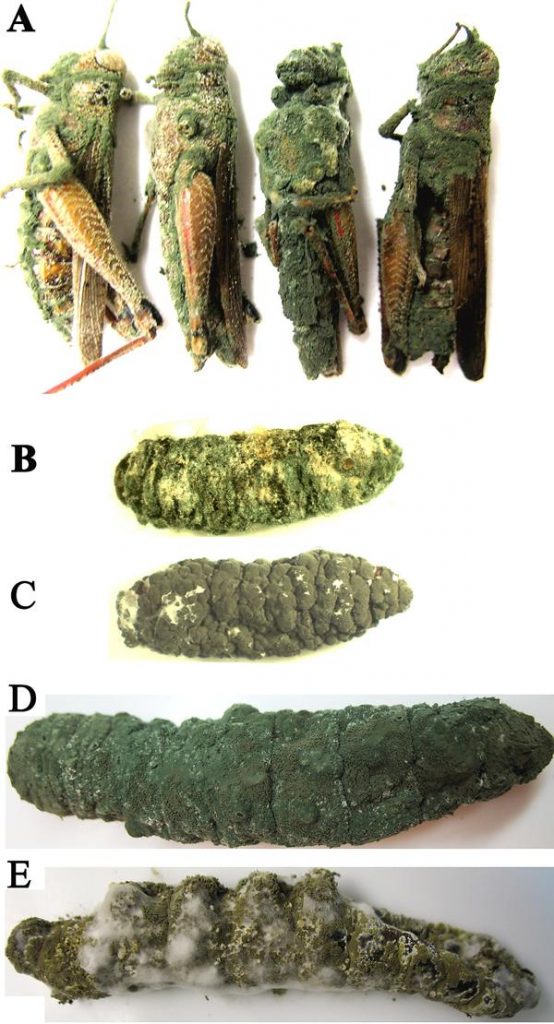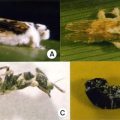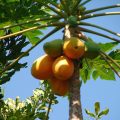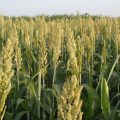Many people associate fungi or molds to various health and food problems. It is widely considered as the culprit for many animal and human diseases and infections. Scientists and biologists worldwide conducted studies focusing on its beneficial effects. In fact, fungus can effectively control insect pests in crops; one good example is the Metarhizium anisopliae.
Metarhizium, also known as “green muscardine”, is a fungus that kills major insect pests such as diamondback moth, cabbageworm, Asian corn borer, coconut beetle, mango leafhoppers, rice black bug, oriental migratory locust, and nematode.
Metarhizium attacks insect pests with its green spores. Once the insect’s skin is exposed to these living spores, they germinate and start to penetrate the blood vessels. The fungus then invades the body cavity, producing toxins that cause paralysis. The insect dies in two days. The fungus that develops on the surface of the dead insect initiates a new round of infection for other insects. The chain reaction makes insect pest annihilation happen at a fast rate.
The inherent quality of fungus is its ability to grow and multiply rapidly. One preparation of Metarhizium contains 2.5 trillion spores, enough to treat a hectare of cropland.
One planting season only requires three applications as compared to chemical pesticides that need to be applied five to six times. A farmer spends P250 per hectare compared to its chemical counterpart which costs around P800 to P1,200 per hectare.

Insects infected with Metarhizium strains showing sporulation on cadavers. (A) Melanoplus femurrubrum infected with wild type Metarhizium acridum Ma324. Galleria mellonella infected with transgenic Ma324-Mest1 (B) and wild type Metarhizium robertsii Mr2575 (C). Manduca sexta infected with transgenic M. acridum Ma324-Mest1 (D) and wild type M. robertsii Mr2575 (E).
Metarhizium is commonly applied through spraying, which should be done late in the afternoon because the active spores are killed by exposure to intense sunlight.
Unlike chemical pesticides, Metarhizium does not leave any residue on the crops that may be harmful to humans. In addition, it does not harm animals and beneficial insects such as bees, insect predators and spiders.
A group of researchers headed by Dr. Dante Santiago of the National Crop Protection Center in UP Los Baños developed an efficient method of growing Metarhizium fungus. The fungus grown on boiled corn until spores germinate and are fully developed in about a week. The collected spores are air dried and stored in a freezer. The formulated fungus remains viable for more than one year. It is available in powder or oil formulation.
—————————–
For more information, please contact Dr. Dante R. Santiago or Dr. Eliseo P. Cadapan at the National Crop Protection Center, College of Agriculture, UPLB, Tel. No. (049)536-2410/0983/2409.
By: Mary Charlotte O. Fresco, BAR Chronicle, October 2001 Issue (Vol. 2 No. 19-20)







given that the price of the fungus is 560 per 250 grams in local shops and that it needs 50 bags how can it cost only 250 per hectare. Where do they source these bags of fungus.
Add suspension of spores into water and leave it overnight. then spray. use 250 gm spores into 500 lit tank this will be enough if spore count is 1×10*9